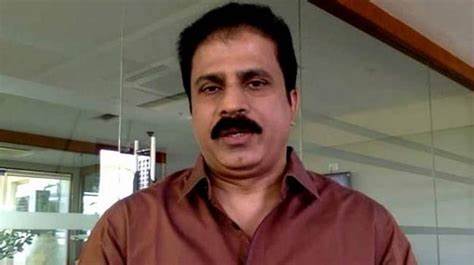Porinju Veliyath’s lessons from the 2017-18 midcap meltdown

Porinju Veliyath’s lessons from the 2017-18 midcap meltdown
Porinju Veliyath’s journey from a law school graduate to a prominent investor is indeed noteworthy. His reflections on his career in a recent interview with Moneycontrol provide insights into his passion for equities and the challenges he has faced along the way.
Starting as a floor trader in Mumbai in 1990, Veliyath has built a reputation for himself as the Founder and CEO of Equity Intelligence. His interest in equities dates back to his student days, showcasing a lifelong dedication to the field. While he may not consider himself a sophisticated analyst or fund manager, he takes pride in delivering superior returns to investors over a span of more than 20 years.
Acknowledging that he, like any other fund manager, has experienced both ups and downs, Veliyath addresses a period of underperformance in 2017-18. During this time, he faced challenges due to the steep fall in mid-cap shares. In response, he advised his clients to ‘wait patiently’ until a portfolio rejig was possible, demonstrating his commitment to navigating challenges and ensuring the best outcomes for his investors.
This episode highlights the unpredictable nature of financial markets and the importance of resilience and strategic decision-making in the world of investments. Veliyath’s ability to recover from setbacks and guide his clients through challenging times speaks to his experience and expertise in the field.

In reflecting on the challenges faced during the 2017-18 period, Porinju Veliyath offered valuable insights into his investment philosophy and strategic adjustments.
Veliyath recognized the significance of efficient asset management, particularly within Portfolio Management Schemes (PMS). The surge in investors during that timeframe created difficulties in handling smaller and illiquid companies within the portfolio. In response, he strategically chose to avoid such entities, aiming to maintain better liquidity and mitigate challenges associated with managing smaller Asset Under Management (AUM).
Another pivotal takeaway involved a transformation in Veliyath’s stock-picking approach. Acknowledging a failure to promptly adapt to the increased AUM, which resulted in temporary underperformance, he made a conscious shift toward focusing on more significant stocks. This adjustment demonstrated an understanding of the necessity to align investment strategies with the scale of assets under management, emphasizing the importance of adapting to changing circumstances for sustained performance in dynamic market conditions.
These lessons showcase Veliyath’s analytical acumen and his ability to identify areas for improvement. By making strategic changes based on past experiences, he underscores a commitment to continuous learning and resilience in the ever-evolving field of investment management.
Porinju Veliyath’s current stance on the market reveals a pragmatic and cautious investment philosophy. His counsel, particularly tailored for value investors, delves into several critical considerations.
Veliyath places a strong emphasis on evaluating market opportunities and the scale of products or services offered by potential investments. This indicates a strategic focus on companies with substantial market potential and scalability, aligning seamlessly with the core tenets of value investing.
The mention of considering promoter attitudes underscores the significance of assessing the leadership and management of prospective investments. A favorable and ethical leadership style is recognized as a contributing factor to the long-term success and stability of a company, adding a qualitative dimension to the investment decision-making process.
Veliyath’s advice to visualize a company’s growth over the next five to 10 years aligns with the foundational principles of value investing. This long-term perspective encourages investors to seek out companies with strong fundamentals and growth potential, emphasizing the importance of sustained performance over an extended period.
The emphasis on risk analysis reinforces a fundamental aspect of any sound investment strategy. Understanding and managing risks associated with investments is crucial, particularly in navigating the inherent volatility of financial markets.
Lastly, Veliyath advocates for a patient and sober approach, highlighting the need for investors to remain disciplined and composed, especially during periods of market fluctuations. This aligns with the idea that successful investing often requires a steadfast, long-term commitment, coupled with the ability to weather short-term market uncertainties.
In summary, Veliyath’s comprehensive advice integrates both quantitative and qualitative factors, offering investors a thoughtful and holistic approach to navigate the complexities of financial markets. By encouraging a thorough assessment of opportunities, understanding company dynamics, conducting risk analysis, and maintaining a patient mindset, he provides valuable guidance for investors seeking sustainable success in their investment endeavors.




